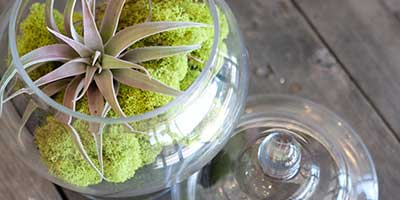"A rose by any other name would smell as sweet," said Juliet when describing her Romeo. To be sure, roses are much more than just popular subjects for literary masterpieces. They decorate, titillate, and stimulate nearly all the senses. For that reason, you can't go wrong using roses as a gift or a gesture for virtually any occasion. Enjoy a glimpse into the world of roses and discover why they make such ideal gift choices.
A little background on roses
You've surely seen hundreds of rose bouquets throughout your life, but how much do you really know about this tantalizing flower?
To start, roses come from perennial shrubs and vines. The genus Rosa actually includes over one hundred separate species of plants and covers a wide variety of colors. The word "rose" is actually a French word with Latin roots.
Most roses originated in Asia, though a few came out of other continents like Europe and Africa. The commonly known garden rose comes from rose hybrid combinations that cropped up after the original rose species started getting shipped all over the world.
The stems on most roses are covered with small thorns designed to ward off predators. The leaves on rose bushes are prickly as well, edged in tiny, tooth-shaped spikes.
The size of a rose bush ranges from tiny and compact to as high as seven meters.
The many uses of the rose
Besides the obvious and perfect use of roses in flower bouquets and gardens, they actually have quite a few other benefits.
Rose hips are the edible fruit from a rose bush, generally found on the plant anywhere between the later part of summer and autumn. Rose hips can be cooked into jellies, jams, and marmalades, or can be brewed into a sweet tea or pressed into rose hip syrup.
Rose hips are well known for their high levels of Vitamin C. In addition to food uses, rose hips can be processed into rose hip seed oil, a special ingredient for high end skin and beauty products.
It's also possible to extract essential oil from rose flowers using a steam extraction possible. The oil is called attar of rose and is commonly used in cuisine from the Middle East and Asia.
In France, rose syrup is a common edible treat. The syrup is made from an extract of rose petals. In the United States, that same syrup is used to make both marshmallows and scones.
The myth of the black and blue rose
Despite many stories to the contrary, there are no blue or black roses.
People interested in Gothic traditions are well-known to be on a quest for the black rose, but at present such a rose simply does not exist.
Scientists in the Netherlands have spent half a century trying to create a blue rose, combining the genes of striped tulips that have blue coloring with popular American white roses. They've used a full arsenal of biotechnological engineering to try and create the ideal genetic material for a line of blue roses, but to date they have not been wholly successful.
There has been some progress made with creating roses of a deep purple hue around the edges of the petals as well as some with a sky blue color near the inside of the flower. Rose enthusiasts are confident it won't take much longer to make the leap to a full blue flower.
To be sure, black roses or blue roses may surface someday in the future thanks to new discoveries in gene splicing. But for now, they simply aren't a reality.
Roses in culture
Thanks to their beauty and sweet fragrance, roses hold a place of prestige in modern society. They're well-known to be a winning choice in gift bouquets and floral arrangements and they symbolize the most of romantic intentions when used in weddings and for Valentine 's Day.
There are countless magazines and membership societies dedicated to roses as well as scores of garden clubs across the country that schedule special meetings around the topic of planting and caring for roses.
In fact, one of the most popular parades in the United States is the annual Rose Parade held in Pasadena, California every New Year's Day. Part of the Tournament of Roses, the Rose Parade features floats adorned with millions of flowers that represent cities, states, and companies from across the country.
The name "Rose" is also quite common as a first or middle name for women in the United States.
The staying power of the rose
Multiple industries have cropped up throughout the years to support the insatiable adoration people hold for the rose. They include plant companies, florists, gift-basket retailers, and perfume makers - and that's just the tip of iceberg! Essentially, the rose is so popular and revered that it's become a clear choice of a gift for nearly any occasion.




